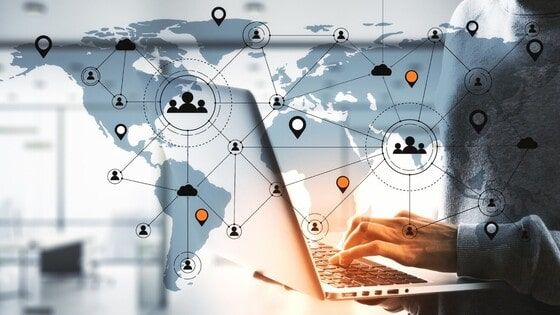Remote Access Security
In today’s dynamic business world, many users are no longer confined to an office. However, the need for secure and convenient access has grown due to emerging cybersecurity threats.
For cybersecurity professionals, it is crucial to understand which remote access security technologies can enable employees to increase productivity, while protecting the organization from malicious actors. For this purpose, companies use remote access security solutions which allow users to authenticate and access business resources from outside the organization’s private network.
A clever remote access solution will always involve the Multi-Factor Authentication (MFA) functionality to verify the remote user’s identity and the Single Sign-On (SSO) functionality to simplify the remote access process and improve user experience.
Multi-Factor Authentication
The MFA functionality helps organizations defend against credential theft attempts and user impersonation by verifying and confirming the user’s identity.
With MFA, a remote user is required to present several pieces of evidence to gain access to a network or cloud-based application or system. For instance, some information the user knows, like a user/password combination, or something the user possesses, such as an access card or a mobile device for fingerprint or facial scan recognition. Some MFA solutions also take the user’s location into account when applying the access factors.
NOTE! Many compliance standards require MFA for privileged remote access.
Single Sign-On
The single sign-on functionality allows remote users to access multiple applications and systems using just a set of credentials (username and password) or a one-time password. Therefore, single sign-on boosts the user experience by preventing password fatigue and mitigates risk by eliminating reckless user behavior like writing passwords on a piece of paper or using the same credentials for many applications or services.
Adaptive Authentication
Some of the latest remote access security solutions support adaptive authentication which uses relevant data such as the IP address, the device type, user location, time-of-day, etc. and business logic to determine which authentication factors should be applied to a specific remote user in a specific situation. For example, an employee can easily load a business application from a trusted home desktop just by entering the username and password, but to access the same app from a foreign country, the user might also have to enter a one-time access code sent to his mobile phone.
Privileged Access Management (PAM)
Many companies rely on third-party organizations to manage users’ secure remote access. These organizations need privileged access to corporate IT systems to maintain and update access data.
Privileged access management (PAM) solutions allow organizations to securely extend privileged access to third-party vendors without installing any endpoint software, or using a VPN, etc. Such solutions utilize multi-factor authentication to validate and authorize third-party clients.
Best Practices
Enforce a set of protocols that allow admins to control sessions and restrict remote users from certain activities. So, make sure that only authorized users can access and manage resources remotely.
Always apply the least privilege policy to ensure that employees and third parties are only granted the minimum access required to perform their tasks. It is critical to know who or what is requesting access, why, and from where.
Monitor logs and user behavior in real time to mitigate the risk of unauthorized access. A complex cybersecurity audit will help identify vulnerabilities and trace suspicious sessions.
Train your employees and ensure they strictly follow the security standards before connecting to the enterprise network. Conduct regular training on the importance of basic cybersecurity policies involving the integrity, confidentiality, accessibility, and availability of critical data.
Final Thoughts
Remote access security solutions allow teleworkers to safely utilize business applications and services. Contact StratusPointIT and find out how to better protect your organization against identity theft.



